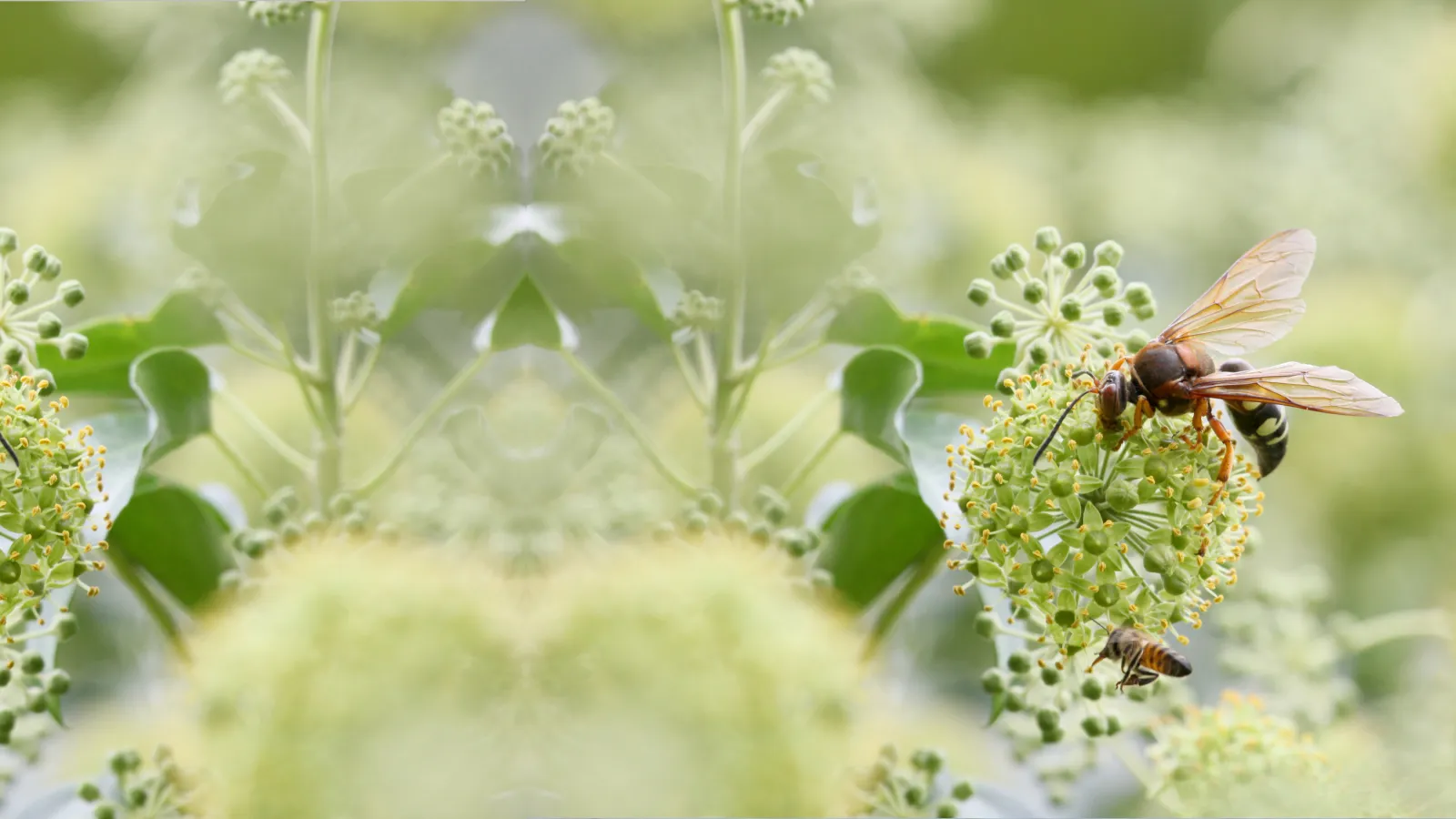
Cicadas Killers
Latin Name: Sphecius speciosus
Cicada killers, also known as cicada killer wasps, are large, solitary wasps belonging to the genus Sphecius. They are named for their behavior of hunting cicadas as food for their larvae. Here are some key points about cicada killers:
Appearance: Cicada killers are large wasps, typically measuring around 1.5 inches (3.8 cm) in length. They have a black body with yellow markings, resembling other wasps in appearance.
Behavior: Despite their intimidating size, cicada killers are generally not aggressive towards humans. They are solitary insects, meaning they do not live in colonies like social wasps such as yellow jackets or hornets. However, males can be territorial and may exhibit aggressive behavior towards other males.
Diet: As their name suggests, cicada killers primarily feed on cicadas. Female cicada killers hunt cicadas, paralyze them with their venomous sting, and then carry them back to their burrows to serve as food for their larvae.
Lifecycle: After mating, female cicada killers excavate burrows in well-drained soil, often in sandy or loose dirt. They then provision these burrows with paralyzed cicadas and lay eggs on them. The larvae hatch from the eggs and feed on the cicadas provided by the mother until they pupate and emerge as adults the following year.
Distribution: Cicada killers are found throughout much of North America, from the eastern United States to the western states and into Canada. They are more commonly found in warmer climates.
Control: While cicada killers may seem intimidating due to their size, they are generally beneficial insects as they help control cicada populations.
Similar Pests: Cicadas